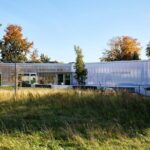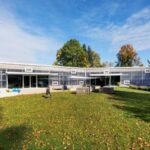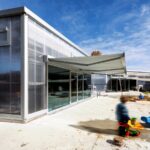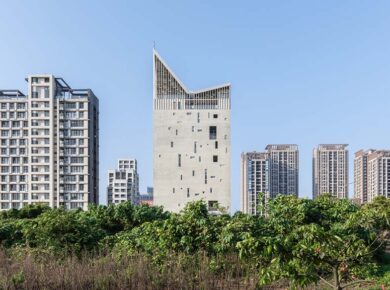The Karoline Goldhofer Daycare Centre embodies the principles of the Reggio pedagogy, chosen deliberately by the non-profit Alois Goldhofer Foundation. This approach prioritizes reuse and preservation of existing structures, tapping into the strengths of the old rather than focusing on its weaknesses. The daycare centre preserves the old house, encapsulating it within a new, translucent shell, creating spaces that serve as extensions for the daycare while embracing sustainable energy concepts.

Sustainable Energy Concept
The new shell, crafted from recyclable polycarbonate, acts as a collector of light and energy, allowing the existing walls to remain uninsulated yet contributing to the building’s heat balance during cold seasons. In summer, the storage mass of the old structure and a rainwater cistern support natural cooling, integrating energy generation and circularity into the daily life of the children. This approach enables energy savings and architectural sustainability, aligning with climate targets for the future.
Architecture Reflecting Purpose
The architecture of the daycare centre celebrates the heritage of the old residential house, with construction, materiality, and details left intact to serve the new purpose. Existing walls support the new roof, while elements like the old chimney and clinker bricks become integral parts of the redesigned space. Former amenities, such as the swimming pool, are repurposed as play areas, fostering imaginative exploration for the children.

Child-Centric Design
The scale and design of fixtures within the daycare centre prioritize the needs of children, offering not only functional utility but also platforms for creative expression and interaction. Raw or untreated materials are used intentionally to promote reusability and engage children in the building process. The landscape architecture extends this ethos, providing a space for play and experimentation amidst the founders’ former garden.
Addressing Climate Challenges
The daycare centre’s design seeks to address the challenges posed by climate change, aligning with the objectives of the European “Green Deal” to achieve climate neutrality and ecological sustainability. By embracing reuse, resource conservation, and experiential climate protection, the architecture enriches spatial experiences while fostering environmental stewardship from a young age.























